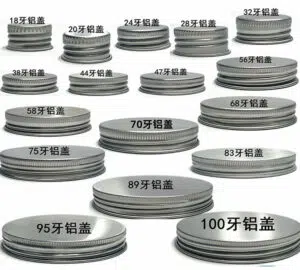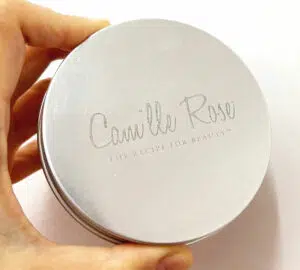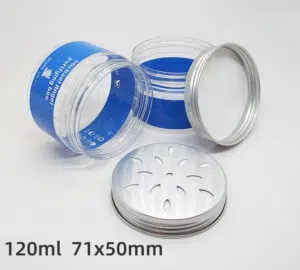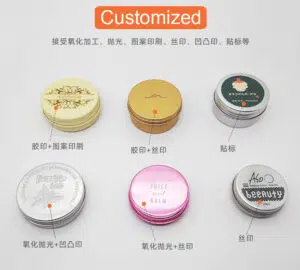In a world where innovation reigns supreme, the mystery behind the material composition of caps metal seems to be a well-guarded secret. Have you ever wondered what lies beneath the surface of these seemingly simple yet intricate metal caps? Buckle up as we embark on a riveting journey to uncover the enigmatic elements that make up these essential accessories. From their humble beginnings to their modern-day evolution, the tale of caps metal is nothing short of fascinating.
As we peel back the layers of history and delve into the heart of manufacturing processes, a realm of alloys, strengths, and durability unfolds before our eyes. The intricate dance of metals coming together to form the perfect blend for caps metal is a symphony of craftsmanship and precision. Join us as we demystify the secrets held within these unassuming yet crucial components, shedding light on their material composition like never before. Embark on this captivating exploration with us, as we unveil the hidden alchemy that transforms raw materials into the sturdy and reliable caps metal we know today.

The Origins of Caps Metal: Tracing Back to its Humble Beginnings
Caps metal, a staple in various industries and everyday life, has a rich history that dates back centuries. The origins of caps metal can be traced back to ancient civilizations where early forms of metal caps were used for protection and adornment. These early caps were often made from basic metals such as copper and bronze, providing a glimpse into the humble beginnings of this essential accessory.
As time progressed, advancements in metallurgy allowed for the exploration of different alloys and their properties. This led to the development of stronger and more durable caps metal that could withstand the rigors of daily use. Alloys such as stainless steel became popular choices due to their corrosion resistance and high strength.

Alloys in Caps Metal: Unveiling the Perfect Blend
The composition of caps metal is a carefully crafted blend of various alloys, each chosen for its unique properties. One common alloy used in caps metal is brass, which is a combination of copper and zinc. Brass offers excellent durability while maintaining an attractive appearance.
Another popular alloy found in caps metal is aluminum. Aluminum alloys are lightweight yet strong, making them ideal for applications where weight reduction is desired without compromising on strength. These alloys are often used in industries such as automotive manufacturing and aerospace engineering.

Strength Matters: Understanding the Durability of Caps Metal
Durability is a crucial factor when it comes to caps metal, as these components are often subjected to harsh conditions and repetitive use. The strength of caps metal depends on several factors including the choice of alloy, manufacturing processes, and heat treatment.
Stainless steel is renowned for its exceptional strength and corrosion resistance, making it a popular choice for applications that require maximum durability. This alloy undergoes a process called passivation, which enhances its resistance to rust and other forms of corrosion.

Manufacturing Processes: The Intricacies of Crafting Caps Metal
The manufacturing processes involved in creating caps metal are as diverse as the alloys used. From casting and forging to machining and stamping, each method contributes to the final product’s quality and performance.
Casting is a common technique used in caps metal production, where molten metal is poured into molds to create the desired shape. This method allows for intricate designs and precise dimensions. Forging, on the other hand, involves shaping the metal through controlled hammering or pressing, resulting in increased strength and improved grain structure.
A Symphony of Metals: How Different Elements Contribute to Caps Metal
The material composition of caps metal is a delicate balance of different elements working together harmoniously. Each element brings its unique properties to the mix, enhancing the overall performance of caps metal.
For example, copper provides excellent conductivity and malleability, making it an ideal choice for electrical applications. Zinc adds strength and corrosion resistance to the alloy, while nickel improves its toughness and heat resistance.
Modern-Day Evolution: Innovations in Caps Metal Composition
The world of caps metal continues to evolve with advancements in technology and material science. New alloys are constantly being developed to meet the ever-changing demands of various industries.
One such innovation is the use of titanium alloys in caps metal production. Titanium offers exceptional strength-to-weight ratio and excellent corrosion resistance. These properties make it an ideal choice for high-performance applications where weight reduction is crucial.
Secrets of Craftsmanship: The Precision Behind Caps Metal Production
The production of caps metal requires meticulous craftsmanship and attention to detail. Skilled artisans and technicians work tirelessly to ensure that each cap meets the highest standards of quality and precision.
From precise measurements to intricate designs, every step in the manufacturing process is carefully executed. Quality control measures are implemented to ensure that caps metal not only meets but exceeds customer expectations.
Unveiling the Alchemy: Revealing the Transformation of Raw Materials
The transformation of raw materials into caps metal is a fascinating alchemy that combines science and art. The journey begins with the selection of high-quality raw materials, which are then processed and refined through various techniques.
These raw materials undergo melting, casting, and shaping processes to form the desired caps metal components. Heat treatment processes such as annealing or quenching further enhance the material’s properties, ensuring optimal strength and durability.
The Role of Recycling: Sustainability in Caps Metal Manufacturing
Sustainability plays a crucial role in modern caps metal manufacturing. Recycling programs are implemented to reduce waste and conserve valuable resources.
Scrap metal from production processes is collected and recycled, minimizing environmental impact while maximizing resource efficiency. This commitment to sustainability ensures that caps metal continues to be produced in an environmentally responsible manner.
Conclusion: The Everlasting Elegance and Utility of Caps Metal
In conclusion, caps metal is a testament to human ingenuity and craftsmanship. From its humble beginnings to its modern-day evolution, this essential accessory has stood the test of time.
The material composition of caps metal is a carefully curated blend of alloys chosen for their unique properties. The manufacturing processes involved in creating caps metal require precision and expertise, resulting in durable components that can withstand demanding conditions.
As we continue to uncover the secrets behind caps metal’s material composition, one thing remains certain – its everlasting elegance and utility. Whether it’s protecting delicate electronics or adding a touch of sophistication to everyday objects, caps metal continues to play a vital role in our lives.